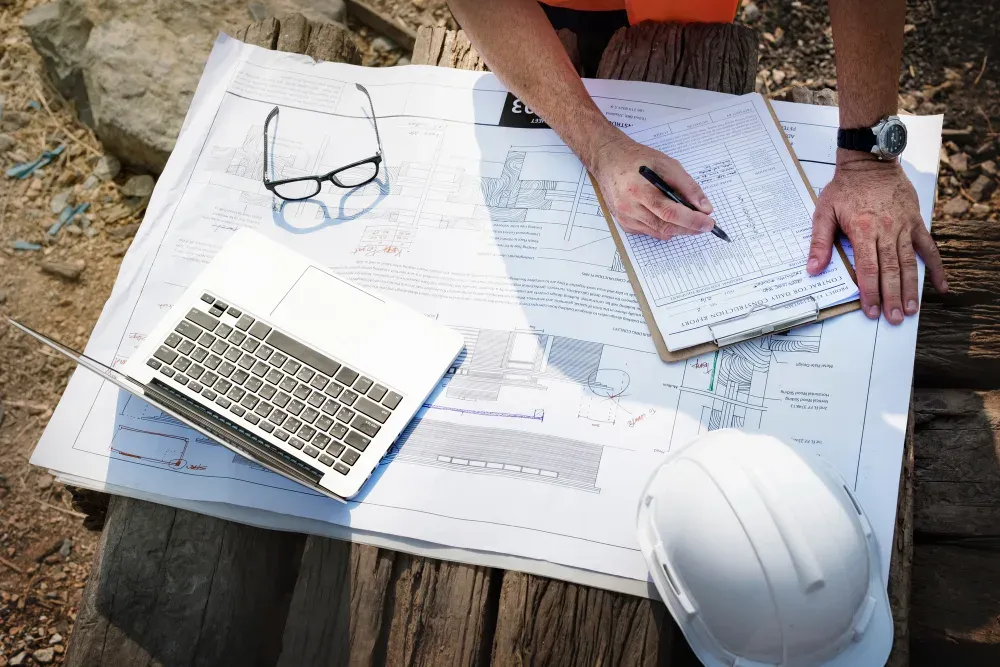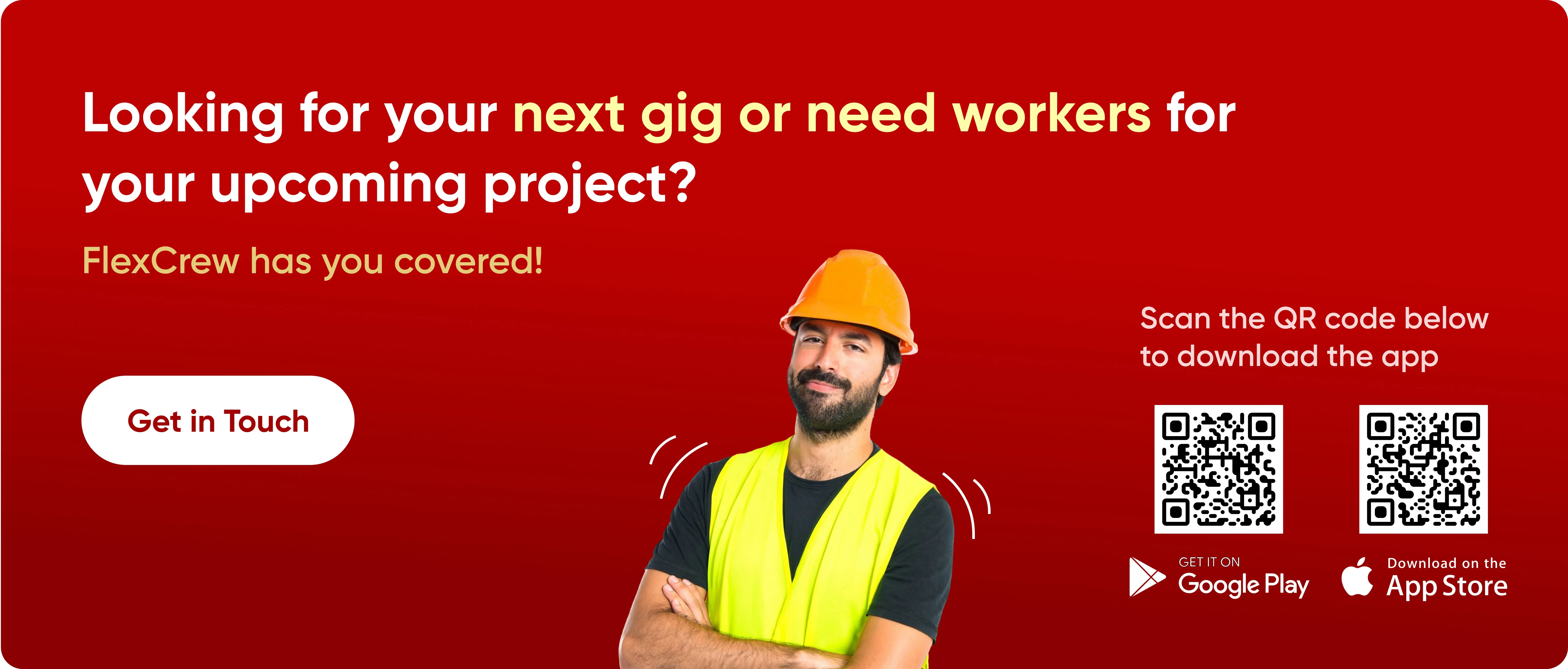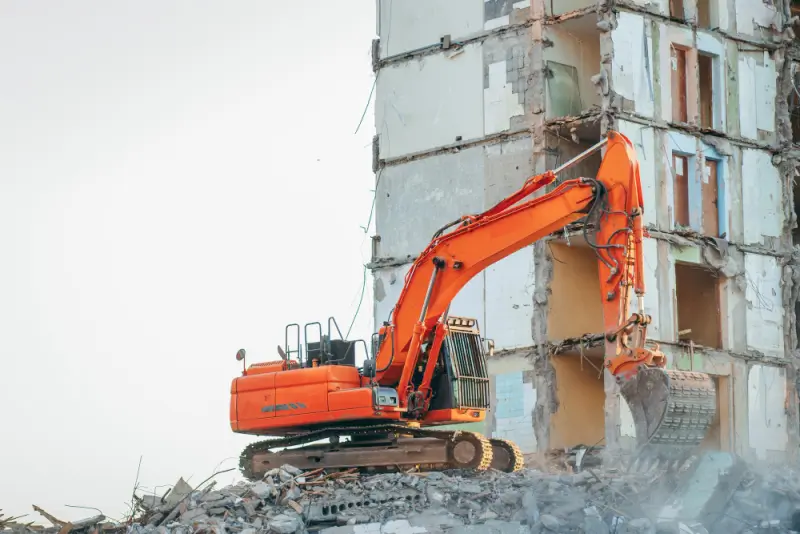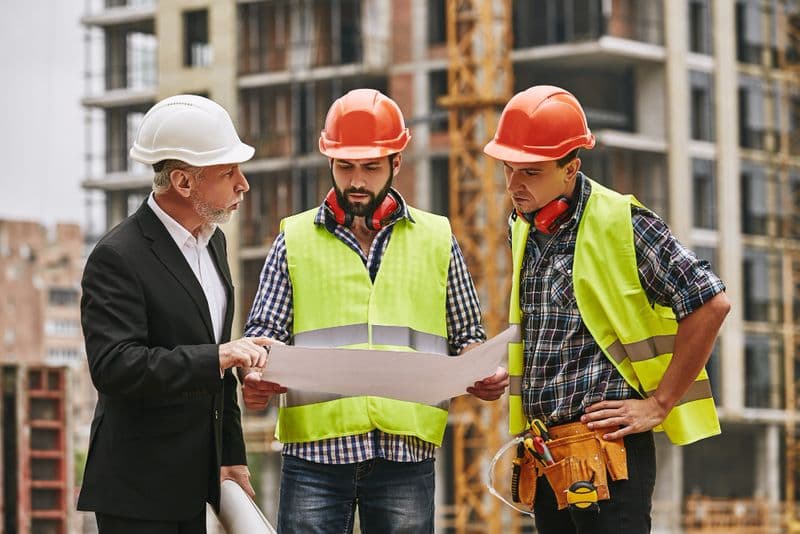You're three weeks into a major commercial build when your concrete supplier suddenly files for bankruptcy. Your schedule's blown, your budget's hemorrhaging, and your client's breathing down your neck. Sound familiar? Construction risk management isn't just corporate jargon – it's the difference between completing projects on time and watching your profit margins evaporate.
What is Construction Risk Management?
Construction risk management is your systematic game plan for spotting, analyzing, and neutralizing threats before they derail your projects. Think of it as your project's insurance policy, contingency plan, and early warning system all rolled into one. Whether you're managing a 10-story office building or renovating a warehouse, effective risk management keeps you three steps ahead of trouble.
The construction industry faces unique challenges that other sectors don't deal with. You're juggling multiple subcontractors, dealing with unpredictable weather, managing complex supply chains, and working under tight deadlines. Every single one of these factors introduces risk. The Construction Industry Institute identified 107 potential risks that could impact your projects – and that's before considering site-specific variables.
Why Construction Risk Management Matters Right Now
The construction landscape in 2025 is tougher than ever. Material costs are still swinging wildly, skilled labor is harder to find than ever, and supply chain disruptions remain a constant headache. According to industry data, two-thirds of contractors report project postponements or cancellations due to economic pressures.

Here's what makes risk management critical:
Financial Protection: Poor risk management costs contractors millions annually through delays, rework, and claims. One missed permit or botched inspection can set you back weeks and thousands of dollars.
Competitive Edge: Companies with solid risk management processes complete projects 15-20% faster than those flying by the seat of their pants. That translates directly to more projects, happier clients, and better margins.
Workforce Safety: Construction remains one of the most dangerous industries in America. Proper risk management reduces accidents, keeps your crew safe, and shields you from costly lawsuits.
Client Trust: Clients notice when you've got your act together. Demonstrating strong risk management capabilities wins you repeat business and premium contracts.
The Five Types of Construction Risks You Can't Ignore
1. Financial Risks
Cash flow problems kill more construction companies than any other factor. Payment delays, material cost spikes, and budget overruns can squeeze your operations until there's nothing left. With inflation still affecting material prices in 2025, staying on top of financial risks is non-negotiable.
Key actions to take:
- Monitor payment schedules religiously – know exactly when money's coming in and going out
- Build cost escalation clauses into your contracts whenever possible
- Maintain strong relationships with suppliers who'll work with you when things get tight
- Keep 10-15% contingency reserves for unexpected costs
2. Safety and Labor Risks
Your crew is your most valuable asset – and your biggest liability if something goes wrong. Falls, equipment malfunctions, and onsite accidents happen daily across American construction sites. Beyond the human cost, accidents trigger lawsuits, regulatory investigations, and insurance nightmares.
Critical safety considerations:
- Implement daily safety briefings and ongoing training programs
- Ensure proper PPE usage and equipment maintenance
- Address the skilled labor shortage strategically
- Avoid overextending workers, which leads to mistakes and accidents
The skilled labor shortage compounds these risks. When you're short-staffed, workers get overextended, mistakes happen, and safety protocols slip. That's where partnering with a reliable staffing solution like FlexCrew USA becomes critical. Having access to pre-vetted, qualified workers when you need them keeps projects moving safely and efficiently.
3. Supply Chain and Material Risks
Steel shortages. Lumber price volatility. Delayed shipments. Welcome to construction in 2025. Supply chain disruptions remain one of the top risks contractors face, with geopolitical tensions and transportation bottlenecks creating ongoing uncertainty.
Smart supply chain strategies:
- Diversify your supplier base – never rely on a single source
- Maintain buffer inventory on critical materials
- Use technology to track deliveries in real-time
- Build relationships with backup suppliers before you need them
- Order long-lead items early in the project timeline
4. Schedule and Performance Risks
Delays cascade. One subcontractor running late throws off three others. Bad weather pushes your timeline back a week. Suddenly you're facing liquidated damages and an angry owner.
Protecting your schedule:
- Build realistic buffer time into project timelines
- Maintain detailed communication with all subcontractors
- Track critical path activities daily
- Address design issues during preconstruction
- Document all changes and delays immediately
Performance risks also include design errors, scope creep, and quality issues that force expensive rework. The best defense? Detailed planning, clear communication, and contingency time for inevitable hiccups.
5. Legal and Compliance Risks
Construction is drowning in regulations – building codes, OSHA requirements, environmental rules, contract terms, and local ordinances. Miss one inspection or violate one code, and you're looking at fines, work stoppages, and potential lawsuits.
Staying compliant:
- Maintain updated knowledge of local building codes and regulations
- Schedule inspections proactively, not reactively
- Keep detailed documentation of all compliance activities
- Use clear, unambiguous contract language
- Define scope, payment terms, and change order procedures explicitly
Contract disputes are equally dangerous. Ambiguous scope definitions, payment terms, or change order procedures can land you in court faster than you can say "mechanic's lien."
The Construction Risk Management Process: Your Step-by-Step Playbook
Step 1: Identify Every Possible Risk
Start by getting your team together for a thorough brainstorming session. Walk through every phase of the project and ask: "What could go wrong here?" Don't censor ideas – the goal is to create a comprehensive list.
Look at similar past projects. What tripped you up before? Review the site conditions, local regulations, contractor capabilities, and project complexity. Talk to your subs, suppliers, and even the owner about their concerns.
Common risk identification techniques include:
- Risk workshops with all stakeholders
- Site investigations and surveys
- Historical data analysis from previous projects
- Expert consultations
- Checklist reviews
Step 2: Assess and Prioritize Risks
Not all risks are created equal. A minor material delay might cost you a day. A structural failure could cost lives and millions in liability.
Assess each risk based on two factors:
- Probability: How likely is this to happen?
- Impact: If it happens, how bad will it be?
Create a simple risk matrix. High probability, high impact risks get your immediate attention and resources. Low probability, low impact risks might just need monitoring.
Step 3: Develop Response Strategies
For each significant risk, you've got four options:
Avoid: Change your plans to eliminate the risk entirely. If a supplier's unreliable, find a different one before signing contracts.
Transfer: Push the risk to someone else through insurance, contracts, or subcontracting. This is why you carry liability insurance and include indemnification clauses.
Mitigate: Take actions to reduce the probability or impact. Extra safety training, redundant equipment, quality control checks – these all mitigate risk.
Accept: Some risks aren't worth the cost to address. You acknowledge them and move forward, understanding the potential consequences.
Step 4: Implement Your Plan
Risk management isn't a planning exercise – it's about action. Assign specific people to manage specific risks. Make sure everyone knows their responsibilities and has the resources to execute.
Build risk management into your daily operations. Safety briefings, progress meetings, quality checks – these aren't bureaucratic boxes to check, they're your risk management system in action.
Step 5: Monitor and Adjust
Risks evolve as projects progress. New risks emerge, old ones disappear, and probabilities shift based on changing conditions. Schedule regular risk reviews – weekly for complex projects, monthly for simpler ones.
Track your key risk indicators. Are accident rates trending up? Are deliveries consistently late? Are you burning through contingency budget faster than planned? These signals tell you when to adjust your approach.
How Technology is Transforming Construction Risk Management in 2025
The construction industry's finally catching up to the digital age, and risk management is getting a major upgrade.
Artificial Intelligence is now predicting potential issues before they happen. AI tools analyze historical project data, weather patterns, and market conditions to forecast delays, cost overruns, and safety incidents. Instead of reacting to problems, you're preventing them.
IoT Sensors and Wearables provide real-time data on equipment condition, worker location, and site conditions. If a piece of machinery's about to fail or a worker enters a hazardous zone, you know immediately and can intervene.
Mobile Construction Software keeps everyone connected and informed. Field reports, safety checklists, change orders, and daily logs all happen in real-time, reducing miscommunication and documentation gaps.
BIM and Digital Twins let you test construction sequences virtually before breaking ground, identifying clashes and conflicts before they cost you time and money onsite.

Real-World Risk Management: What Actually Works
The best risk management practices don't require fancy tools or massive budgets. They require discipline, communication, and commitment.
Pre-Construction Planning: Spend extra time upfront identifying and planning for risks. Every hour invested in preconstruction saves ten hours during construction.
Clear Communication Channels: Establish how and when team members report risks, concerns, and issues. Make it easy for people to speak up.
Regular Safety Training: Don't just do the annual OSHA refresher and call it good. Ongoing, relevant safety training reduces accidents dramatically.
Strong Vendor Relationships: Your suppliers, subs, and partners should feel like extensions of your team. Good relationships mean people go the extra mile when you need them.
Quality Control Checkpoints: Build inspection and verification steps into your process. Catching mistakes early prevents expensive rework later.
Contingency Reserves: Always maintain budget and schedule buffers. A 10-15% contingency isn't pessimistic – it's realistic.
Why Workforce Management is Your Secret Weapon
Here's a risk that doesn't get enough attention: inadequate staffing. When you're scrambling to fill positions with whoever's available, quality and safety suffer. Overworked crews make mistakes. Unqualified workers create liability.
How strategic staffing reduces risk:
- Access to pre-screened, qualified workers reduces safety incidents
- Consistent workforce quality maintains project standards
- Flexible staffing prevents permanent overhead costs
- Eliminates schedule delays from staffing gaps
- Ensures compliance with properly documented workers
- Reduces liability from unqualified or overextended crews
This is where FlexCrew USA delivers real value. Instead of gambling on random day laborers or stretching your permanent staff too thin, you get access to qualified construction workers exactly when you need them. Think of strategic staffing as risk mitigation – you're not just filling positions, you're maintaining the workforce quality and consistency that keeps projects on track and under budget.
Common Construction Risk Management Mistakes to Avoid
Even experienced contractors fall into these traps:
Treating Risk Management as a One-Time Exercise: Risk management isn't something you do during preconstruction and forget about. It's an ongoing process throughout the project lifecycle.
Ignoring Low-Probability, High-Impact Risks: Just because something's unlikely doesn't mean you can ignore it. One catastrophic event can sink your company.
Poor Documentation: When things go wrong, your documentation is your defense. Keep detailed records of decisions, communications, changes, and incidents.
Relying Solely on Insurance: Insurance is crucial, but it's the last line of defense, not your primary risk management strategy.
Failing to Learn from Past Projects: If you keep making the same mistakes, you're not managing risk – you're accepting it.
Inadequate Contingency Planning: Hope for the best, plan for the worst. Have backup plans for your critical activities.
Moving Forward: Building a Risk-Aware Culture
The most successful construction companies don't just have risk management processes – they have risk-aware cultures. Everyone from the project manager to the newest apprentice understands that identifying and addressing risks is part of their job.
Create an environment where people feel comfortable raising concerns without getting blamed. Reward proactive risk identification. Share lessons learned from both successes and failures.
Risk management isn't about avoiding all risk – that's impossible in construction. It's about making informed decisions, preparing for the unexpected, and having the systems in place to respond effectively when things inevitably go sideways.
Take Control of Your Project Risks Today
Construction risk management doesn't have to be complicated or overwhelming. Start with the basics: identify your risks, prioritize them, develop response plans, and monitor consistently. Use technology where it makes sense, but don't let perfect be the enemy of good.
Remember, every dollar and hour invested in risk management pays dividends through fewer surprises, smoother operations, and better outcomes. Your competitors who skip this step? They're the ones scrambling to explain cost overruns and delays to angry clients.
Ready to eliminate one of your biggest project risks? Let's talk about your workforce needs. FlexCrew USA connects you with qualified, reliable construction professionals exactly when you need them – no staffing headaches, no quality compromises, no project delays. Visit FlexCrew USA to see how strategic staffing solves your construction risk management challenges.
Frequently Asked Questions About Construction Risk Management
What is construction risk management?
Construction risk management is the process of identifying, analyzing, and addressing potential project threats. It involves evaluating risks that could impact timelines, budgets, safety, and quality, then implementing strategies to minimize those risks before problems occur.
What are the main types of risks in construction projects?
The five primary risk categories are: financial risks (cash flow issues, cost overruns), safety and labor risks (accidents, staffing shortages), supply chain risks (material delays), schedule risks (project delays, quality issues), and legal risks (regulatory violations, contract disputes).
How do you identify construction risks early in a project?
Identify risks through stakeholder brainstorming sessions, site investigations, analysis of similar past projects, expert consultations, and systematic checklist reviews. The preconstruction phase is the critical window for thorough risk identification.
What is the difference between risk mitigation and risk avoidance?
Risk avoidance means eliminating a risk entirely by changing plans – like choosing a different supplier. Risk mitigation means reducing the probability or impact of an accepted risk – like implementing safety protocols to reduce accident severity.
How does technology improve construction risk management in 2025? Modern technology uses AI for predictive analytics, IoT sensors for real-time site monitoring, mobile software for instant communication, and BIM tools for virtual testing. These shift risk management from reactive problem-solving to proactive prevention.
What role does workforce management play in construction risk management?
Workforce management is critical because inadequate staffing, unqualified workers, and overextended crews directly increase safety incidents, quality problems, and delays. Strategic staffing solutions like FlexCrew USA provide pre-vetted professionals, maintaining consistent workforce quality and reducing hiring risks.
How much contingency budget should construction projects include? Industry best practice recommends 10-15% budget contingency for typical projects, with higher percentages for complex or high-risk projects. Schedule contingency should similarly include buffer time for weather delays, approvals, and coordination issues.
What are the most common construction risk management mistakes contractors make?
The biggest mistakes include treating risk management as one-time planning instead of ongoing process, inadequate documentation, relying solely on insurance rather than prevention, ignoring low-probability high-impact risks, and not maintaining adequate contingency reserves.
How often should construction risk assessments be updated?
Review risks weekly for complex projects and monthly minimum for standard projects. Conduct immediate reviews whenever significant changes occur – new subcontractors, design modifications, weather events, or any incident impacting project conditions.
Where can I find reliable construction workers to reduce staffing risks in Texas?
FlexCrew USA provides pre-screened, qualified construction professionals throughout Texas, helping contractors reduce workforce-related risks. Whether you need skilled tradespeople for short-term projects or flexible staffing for variable workloads, FlexCrew delivers reliable workers meeting your quality and safety standards.



